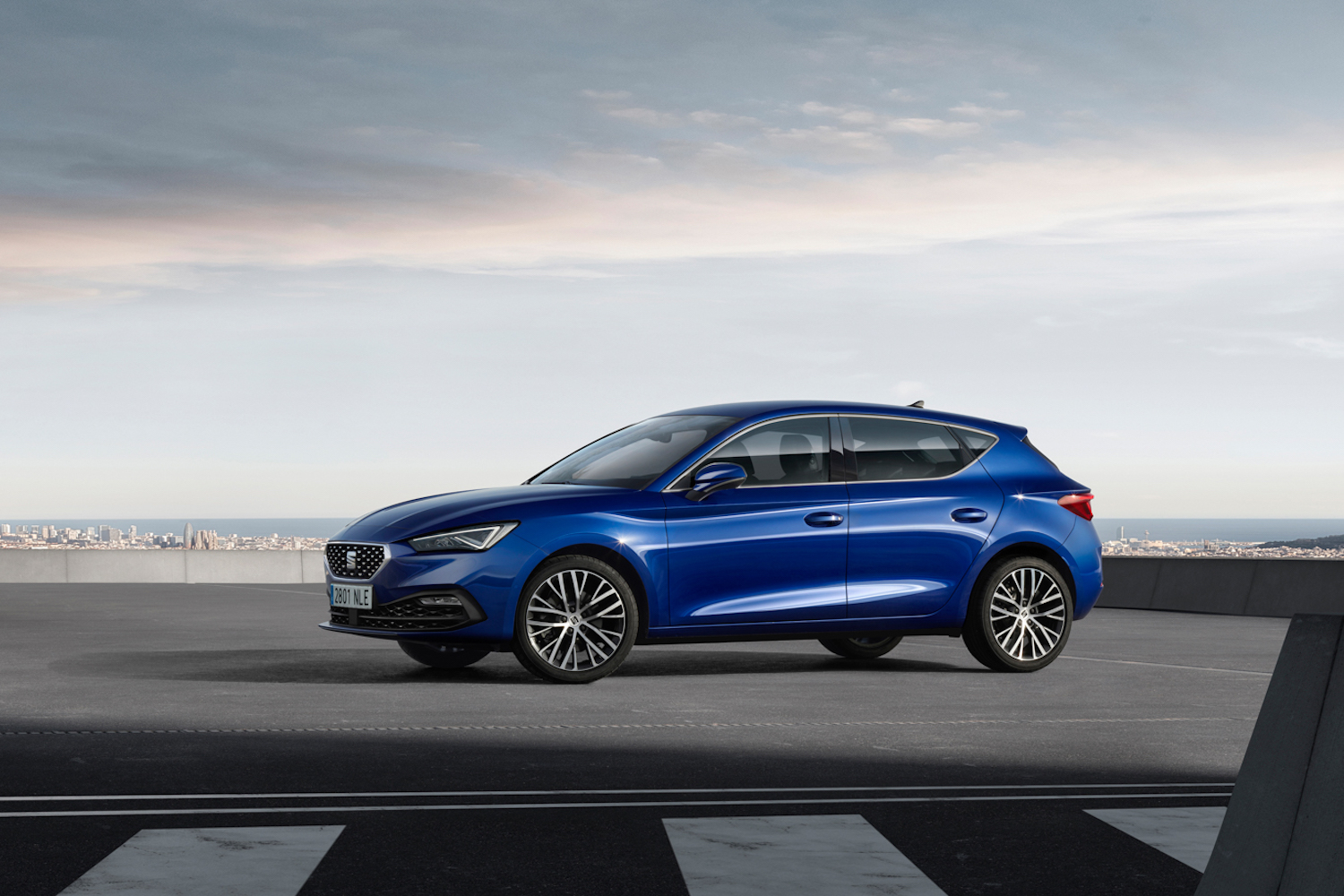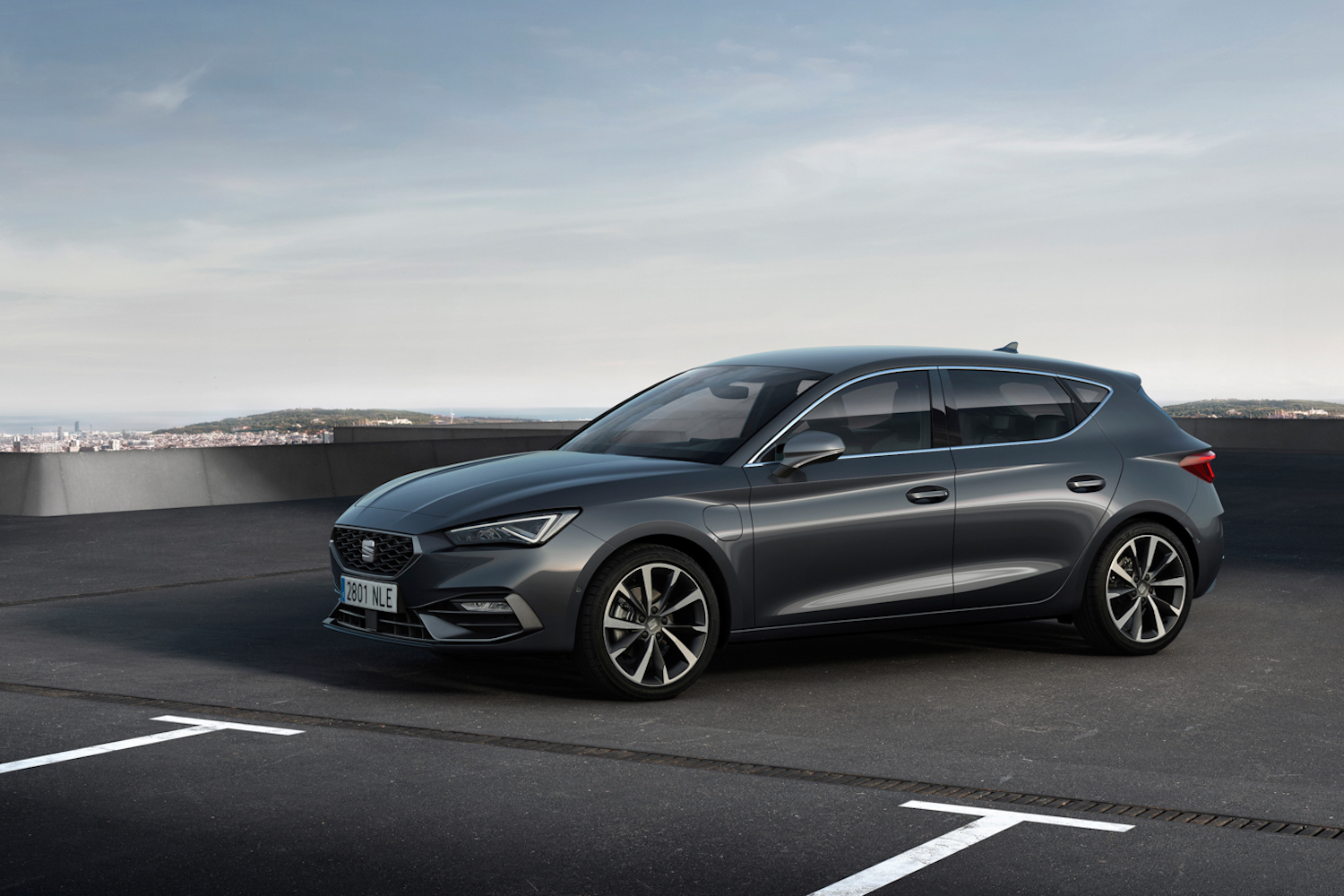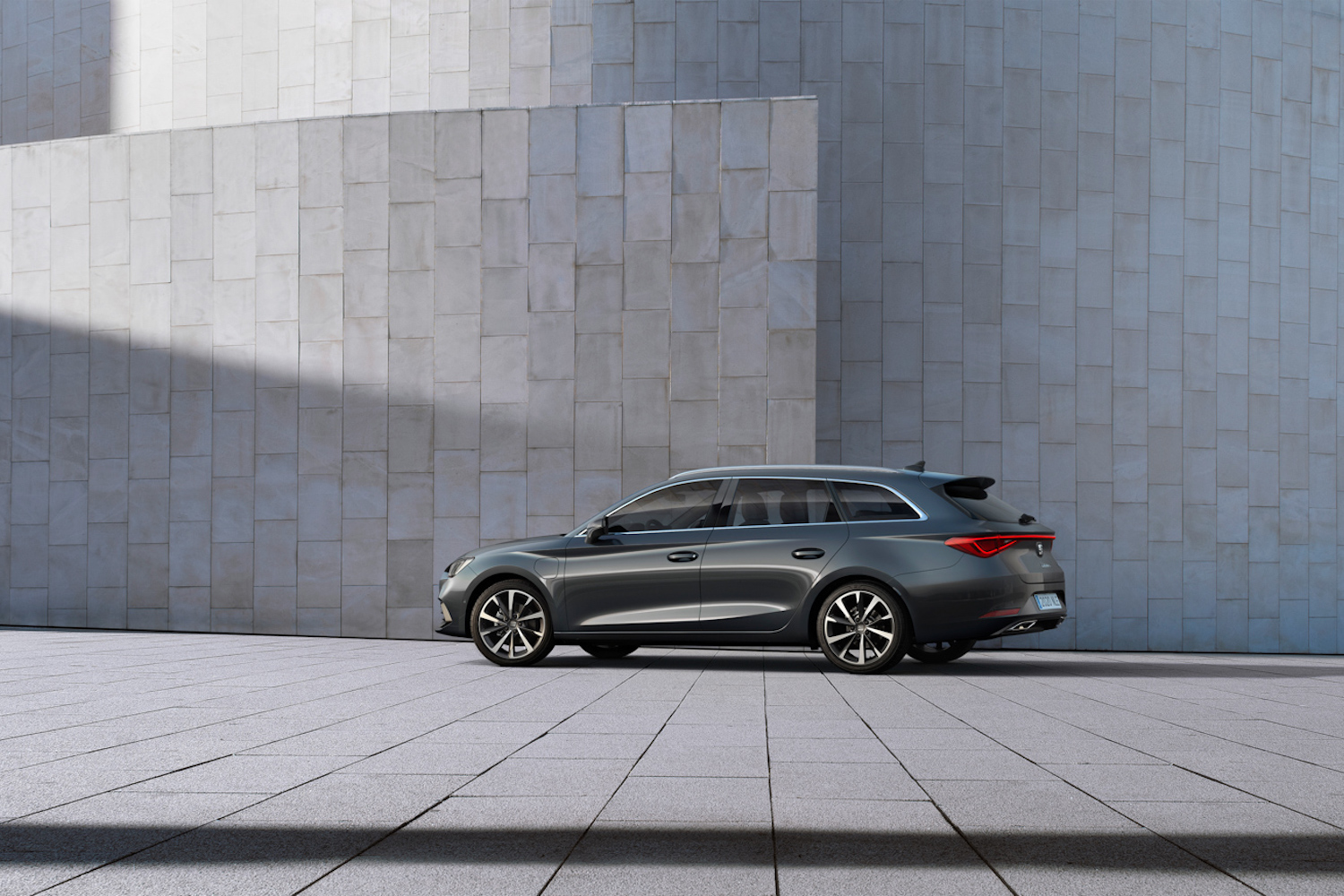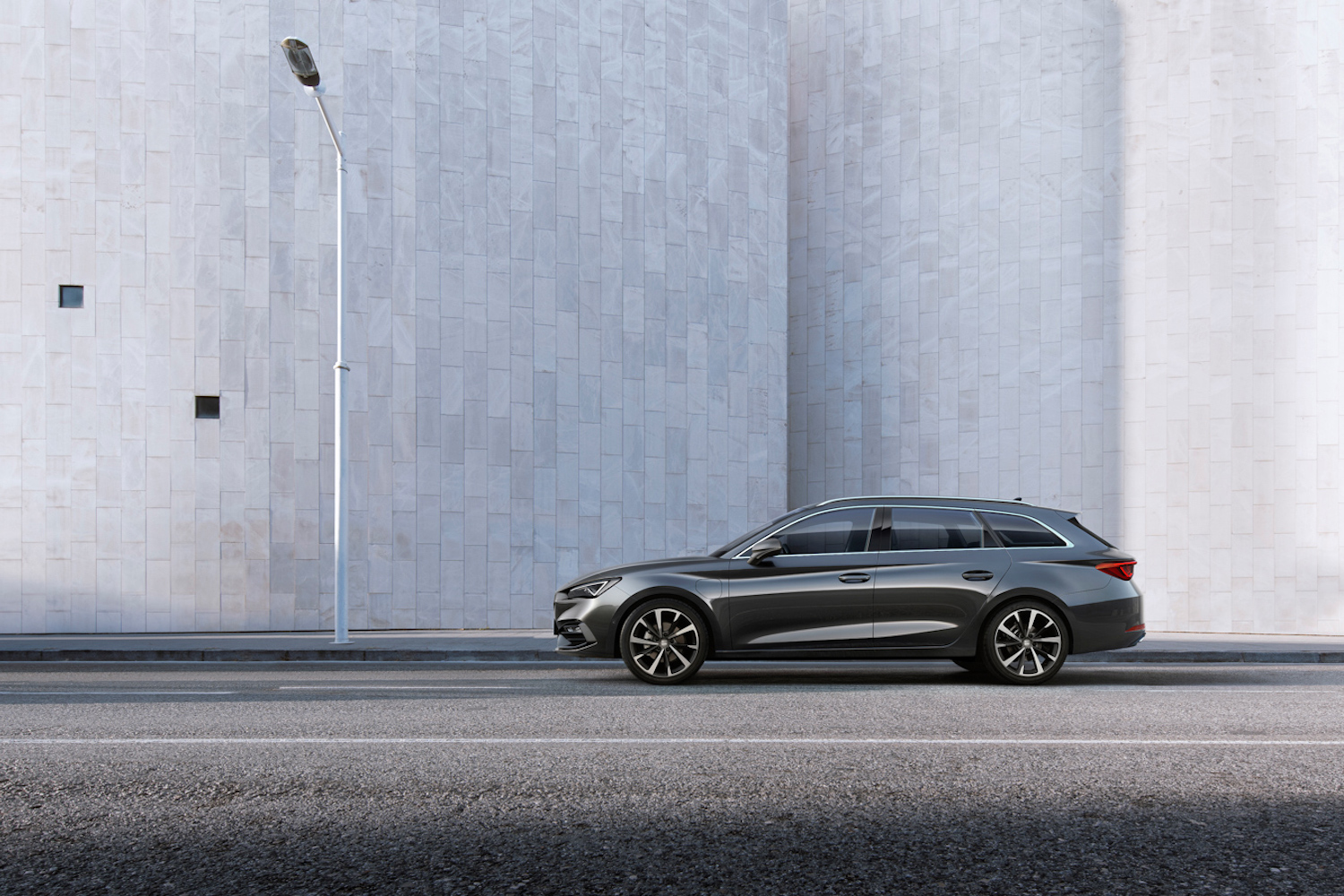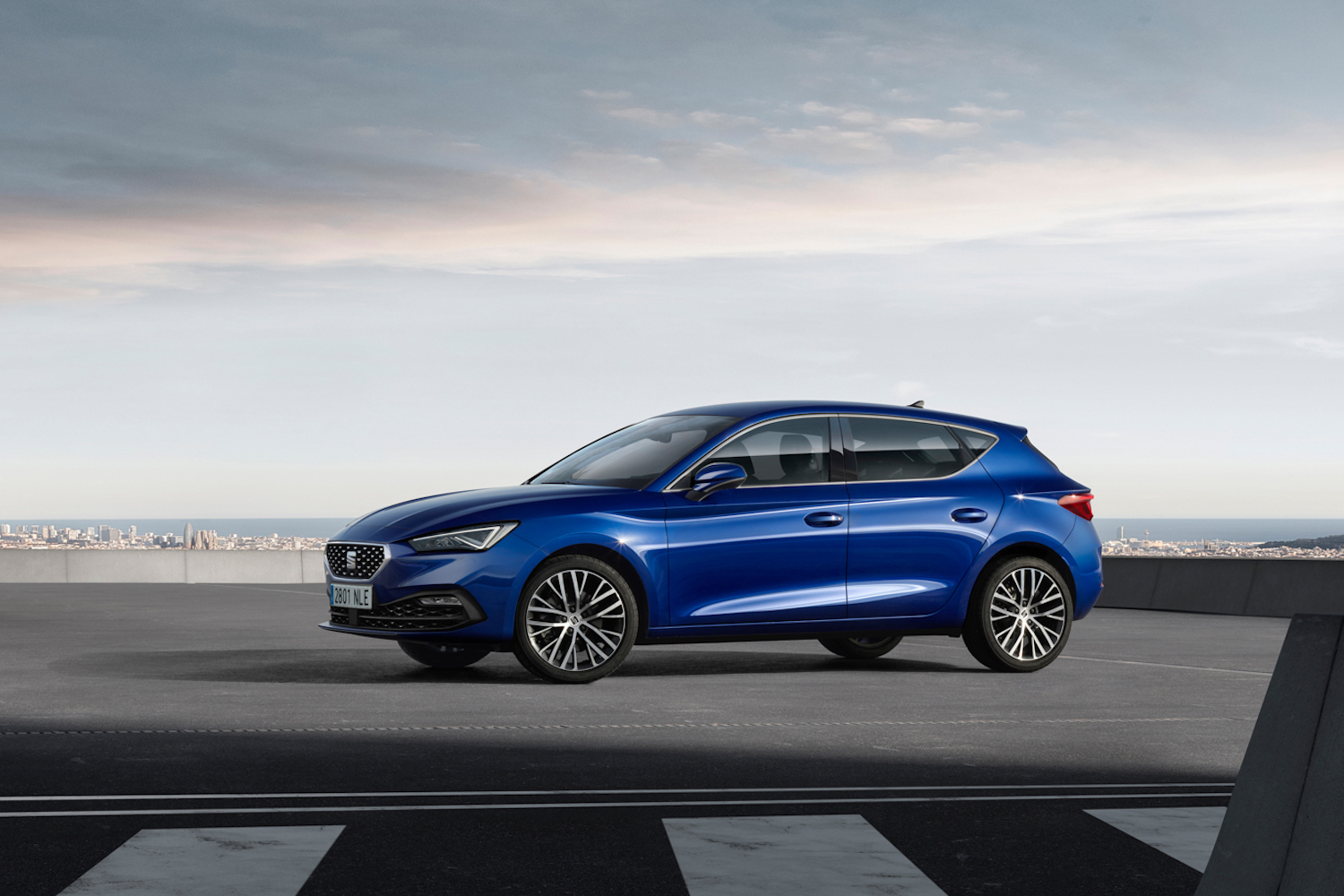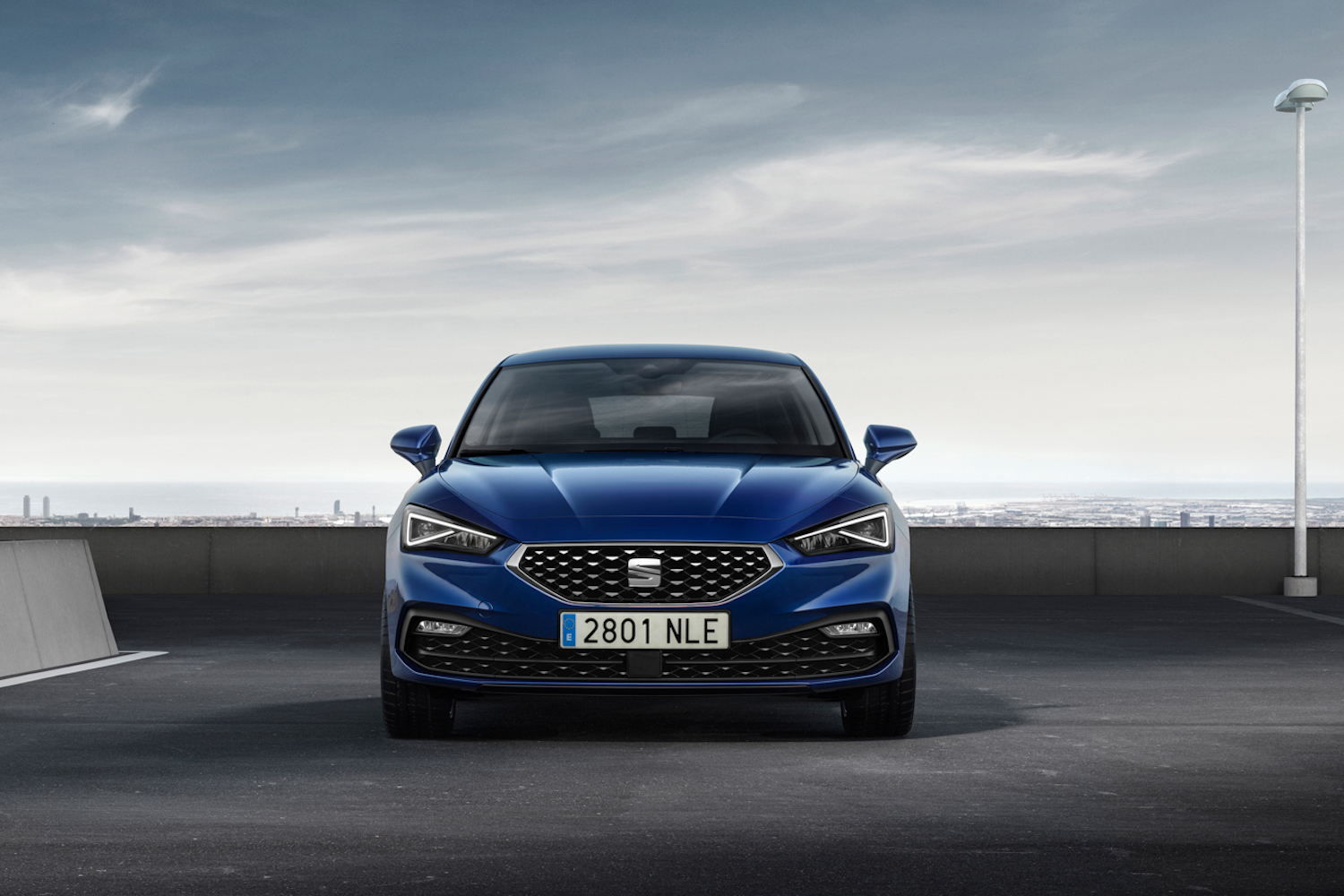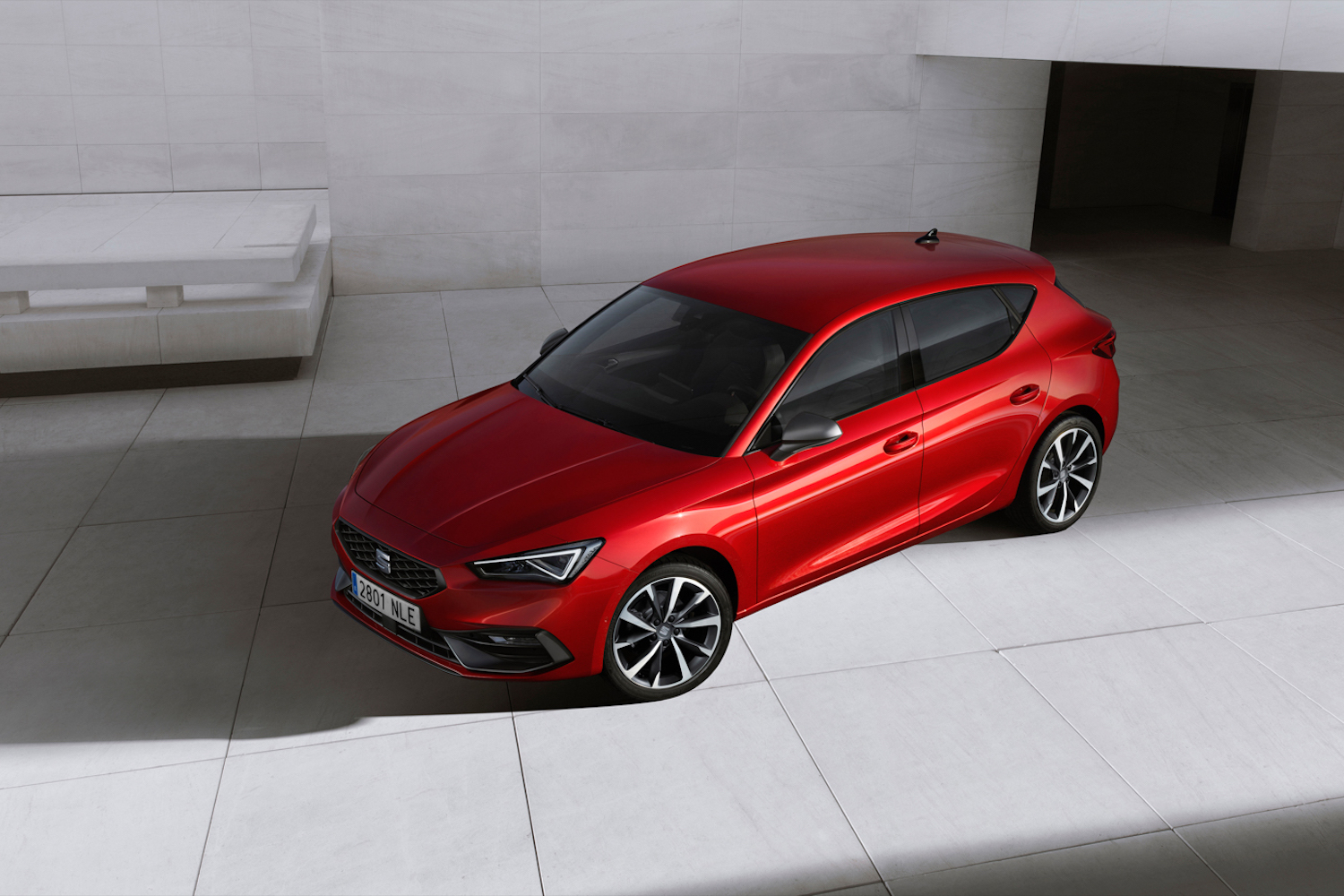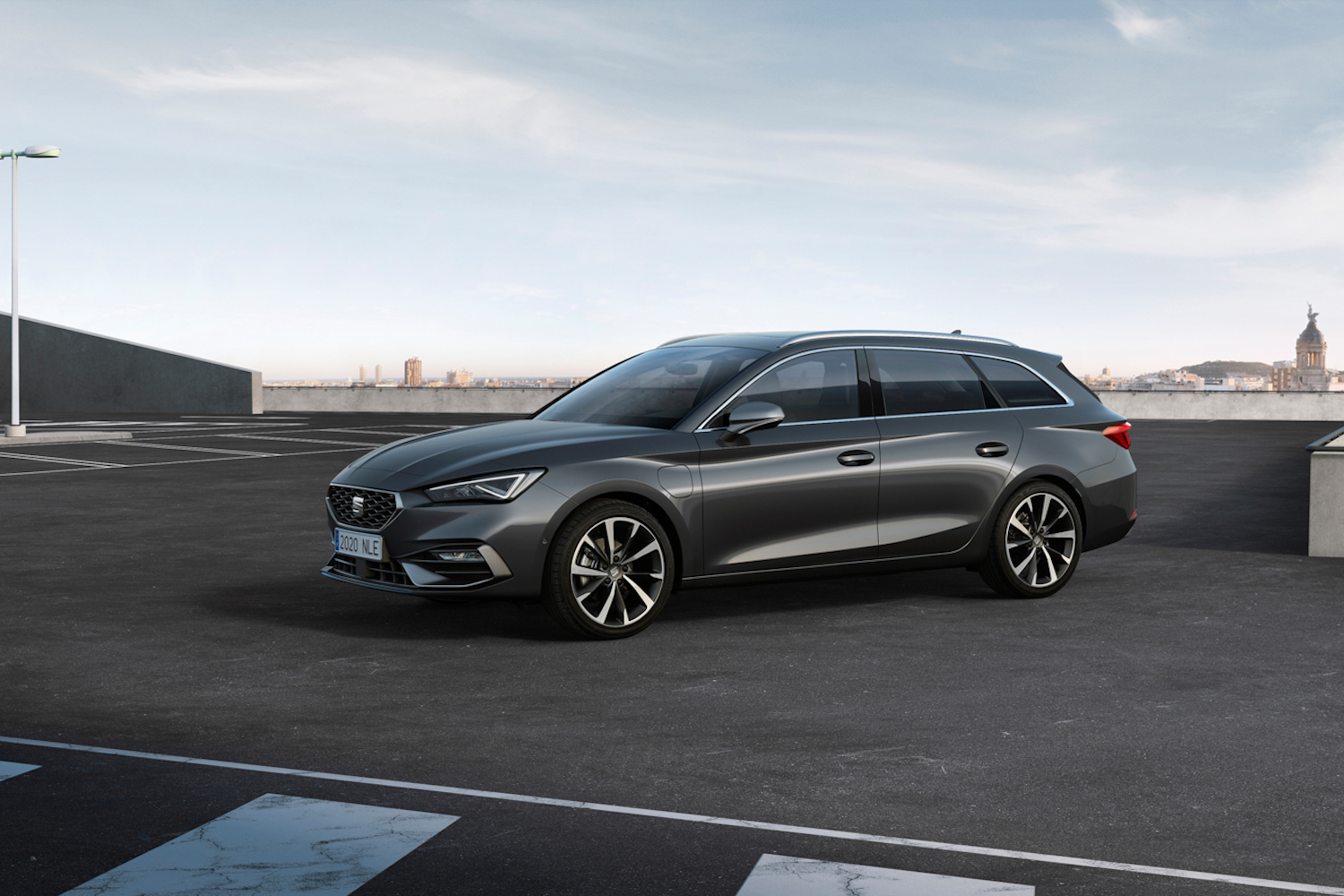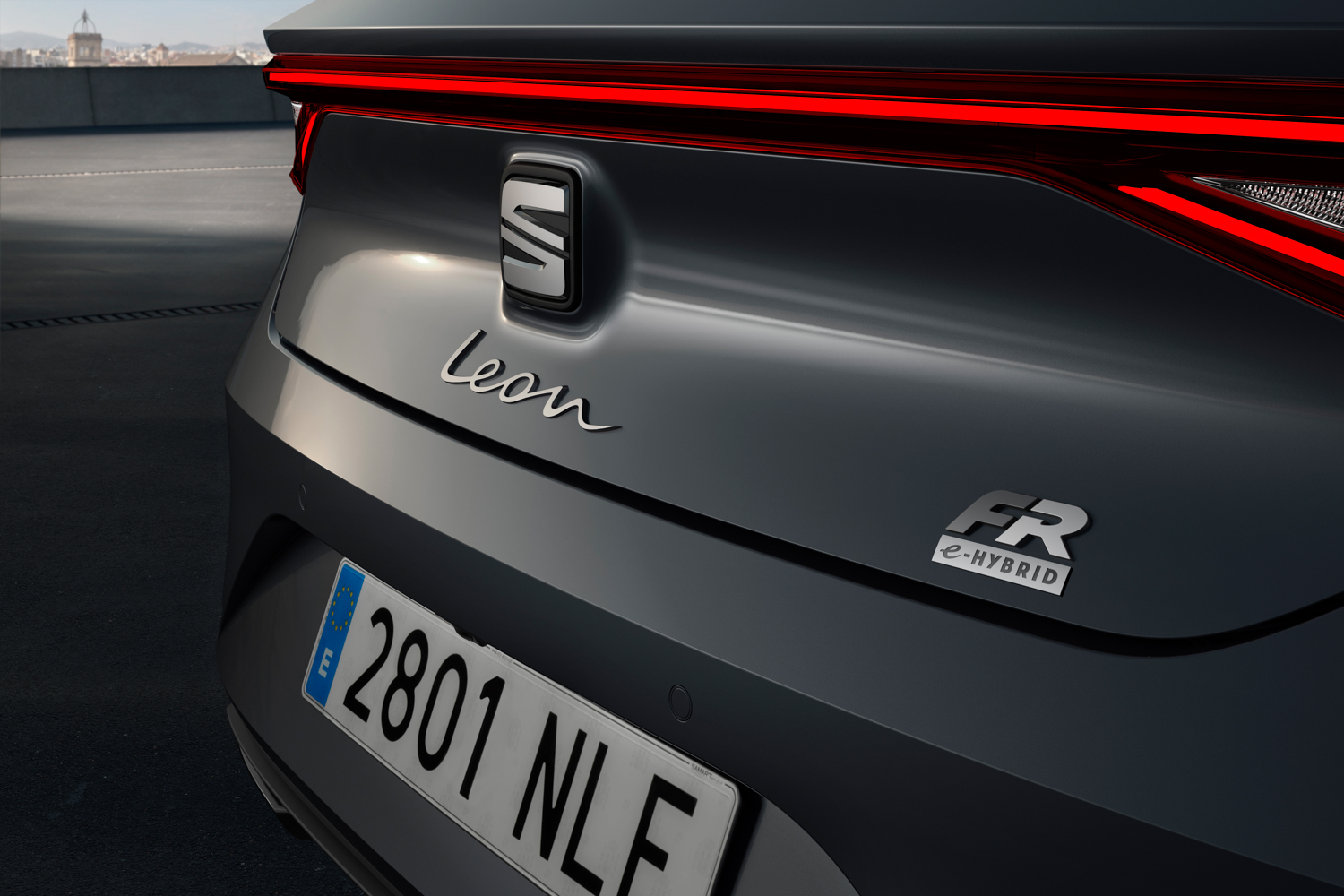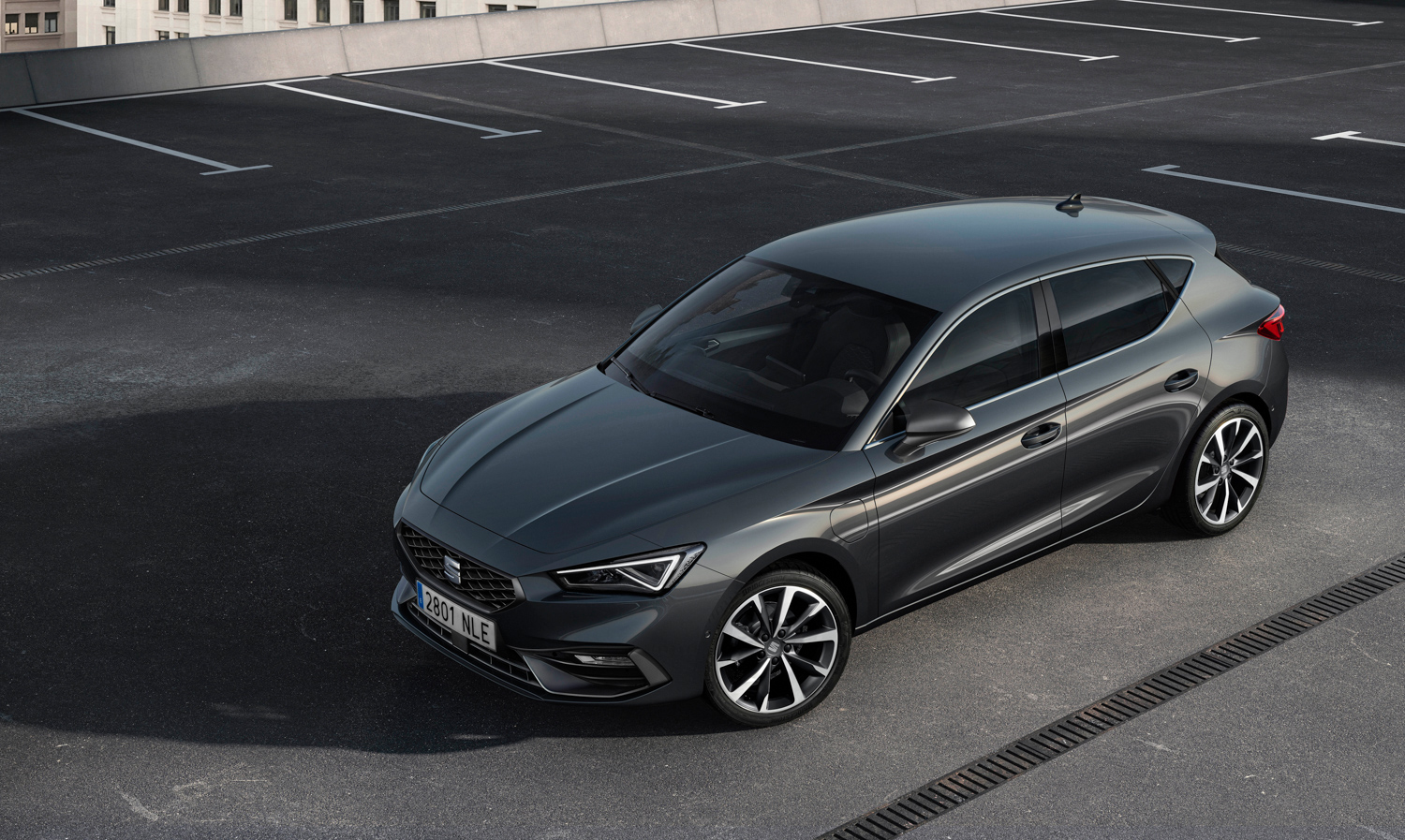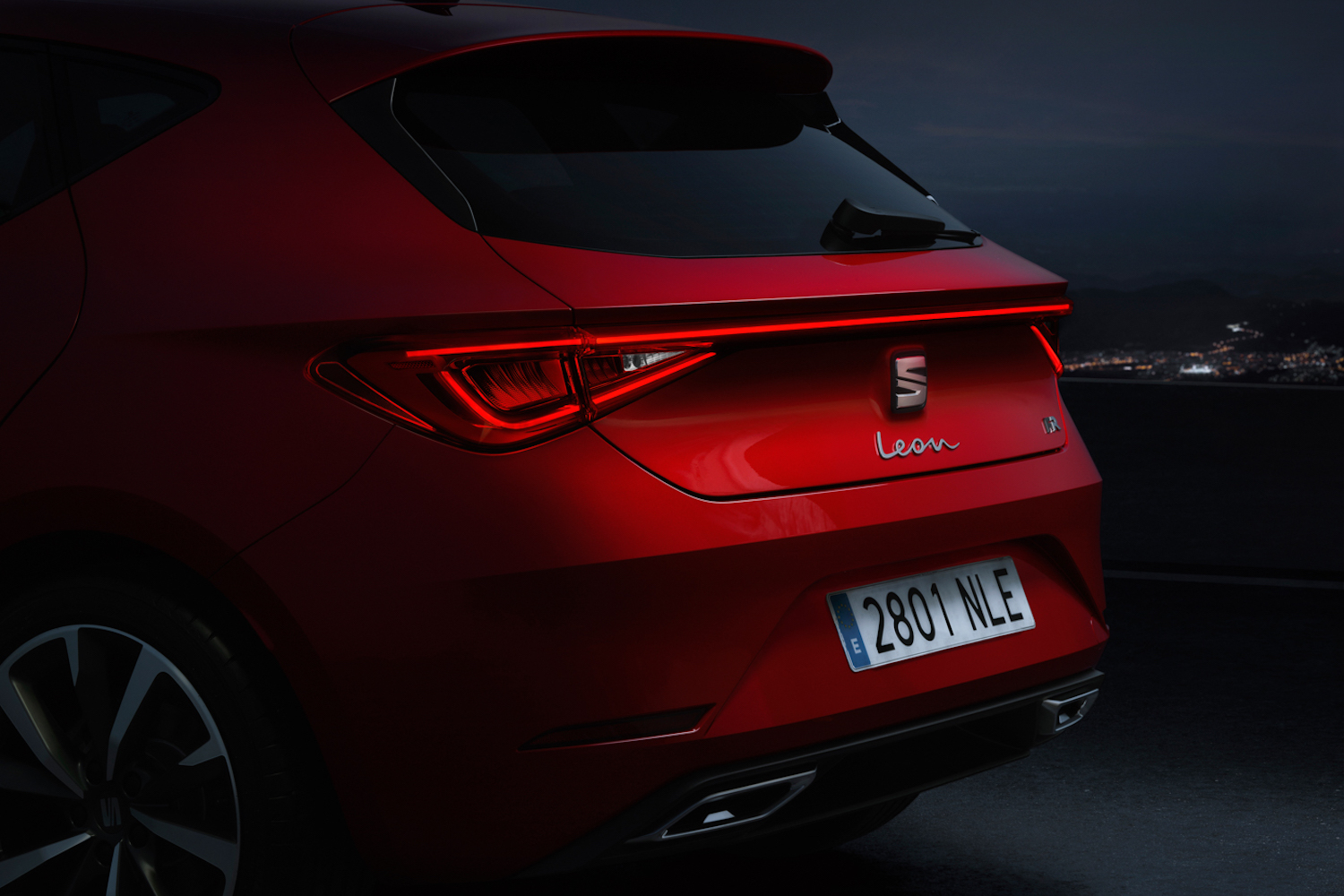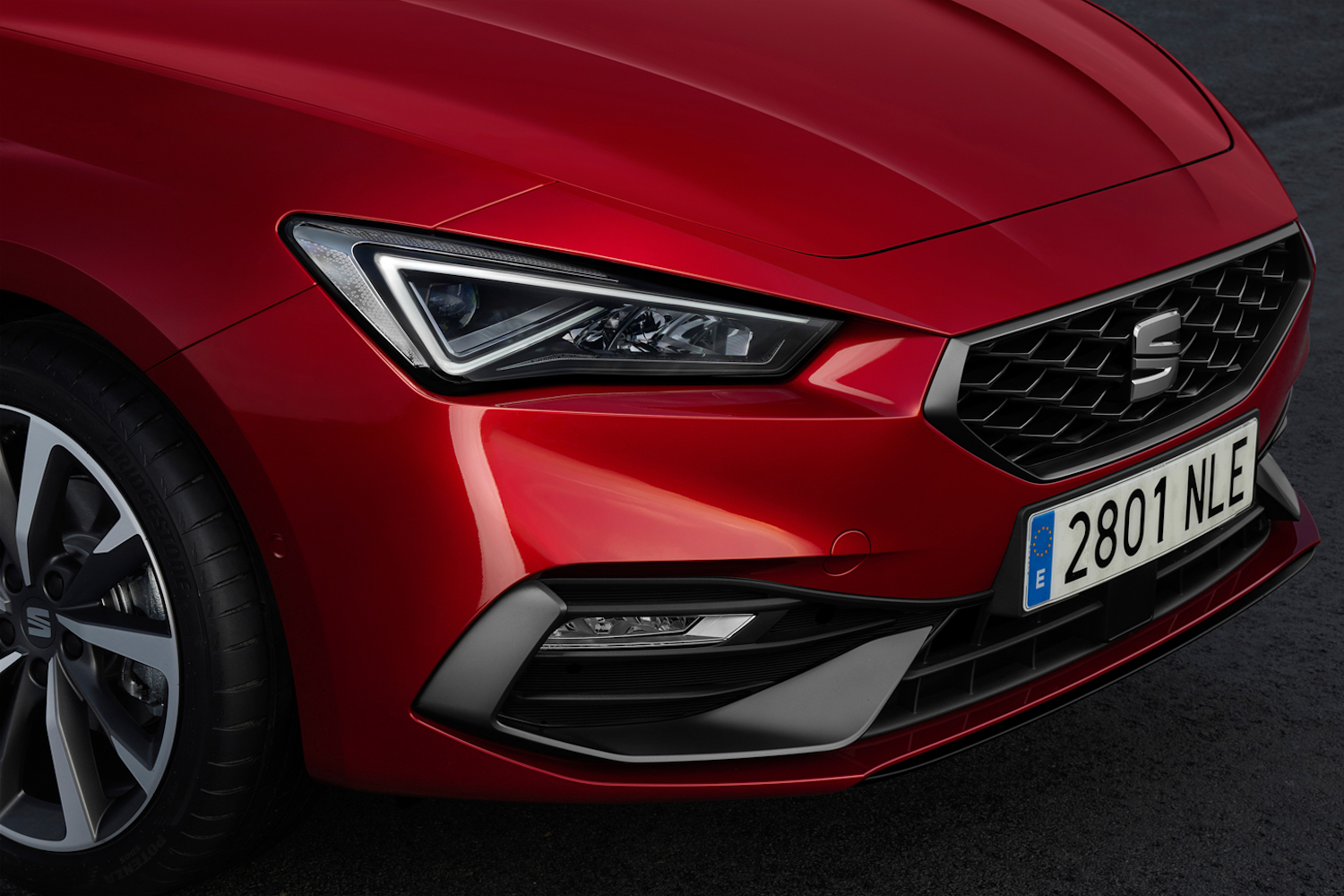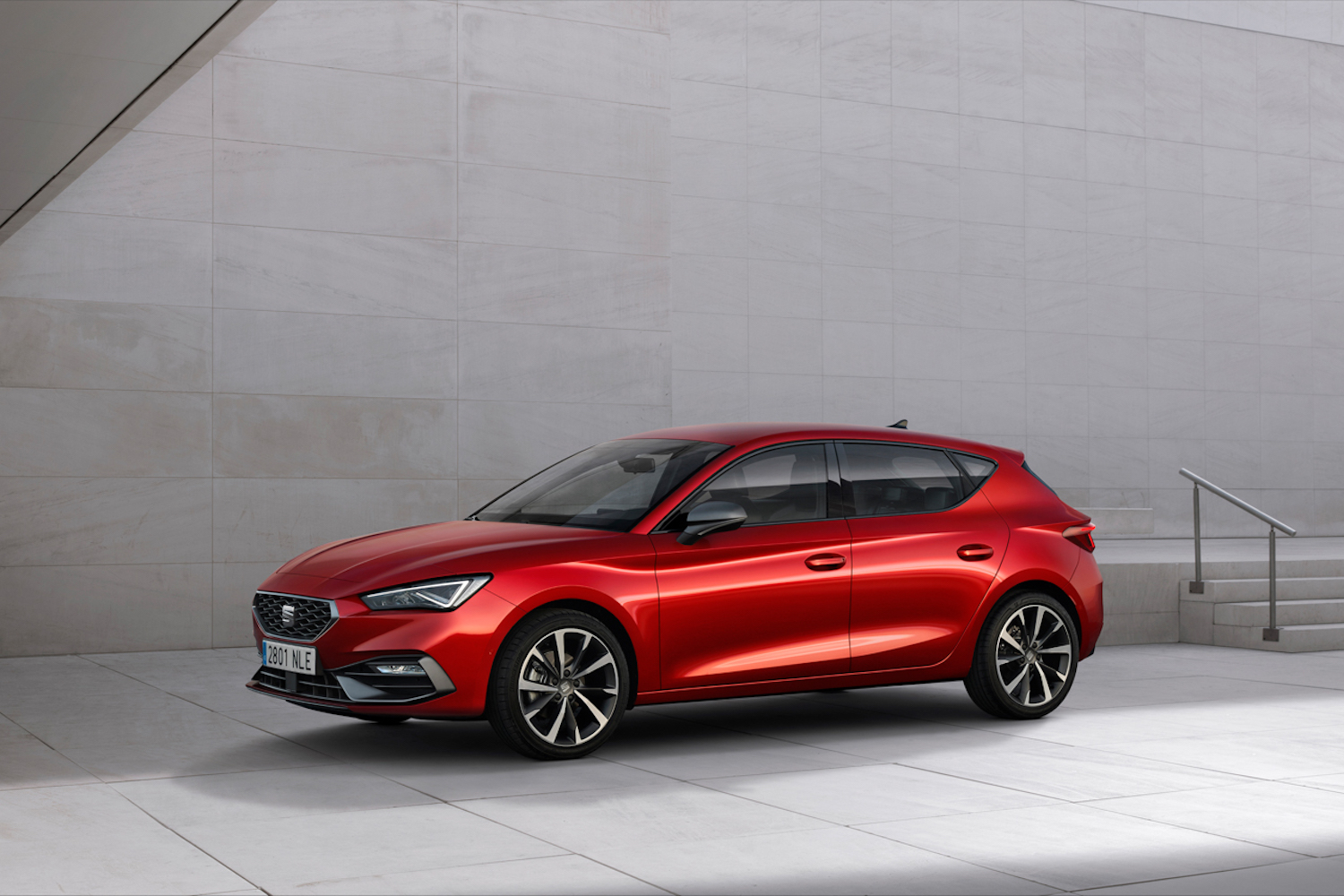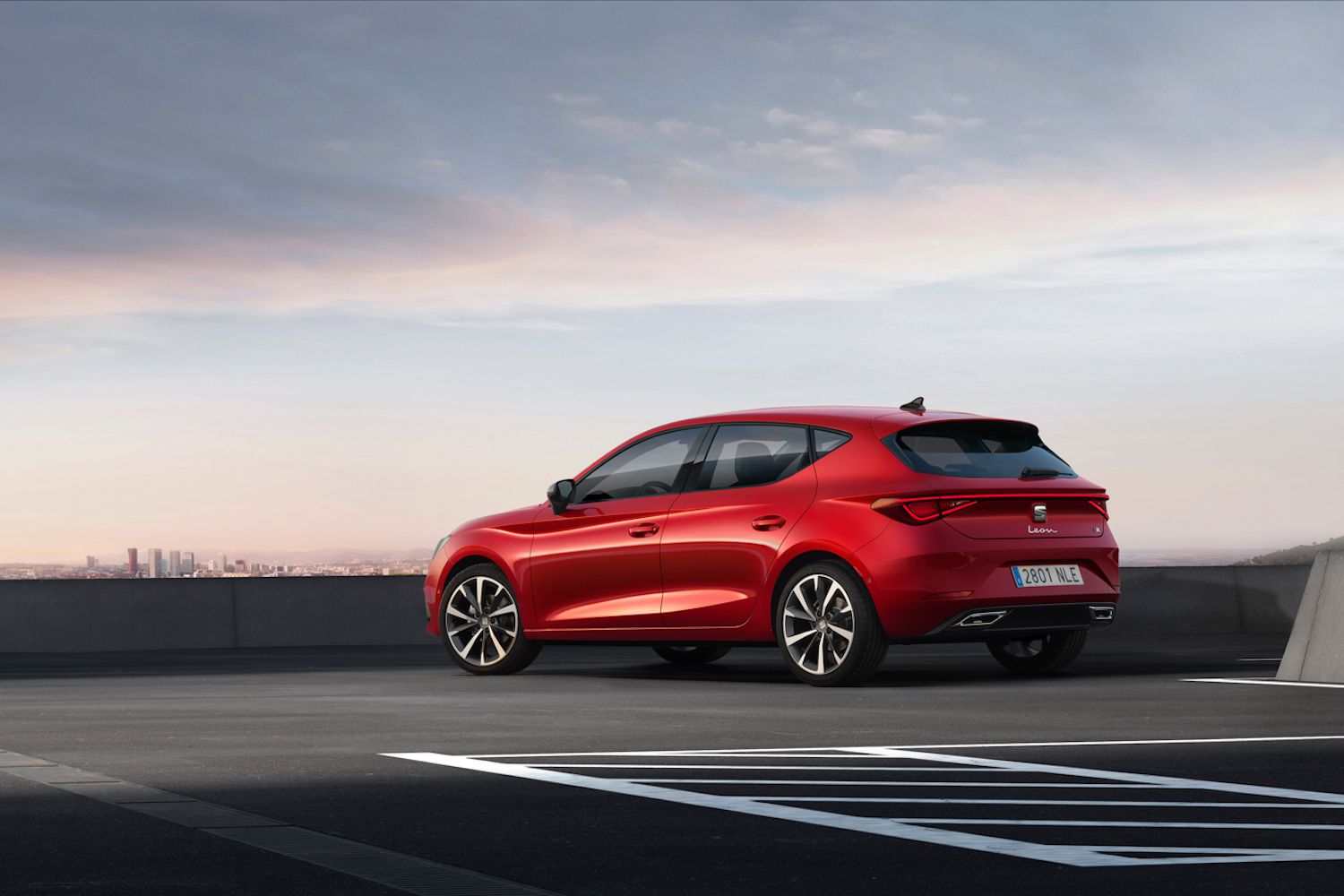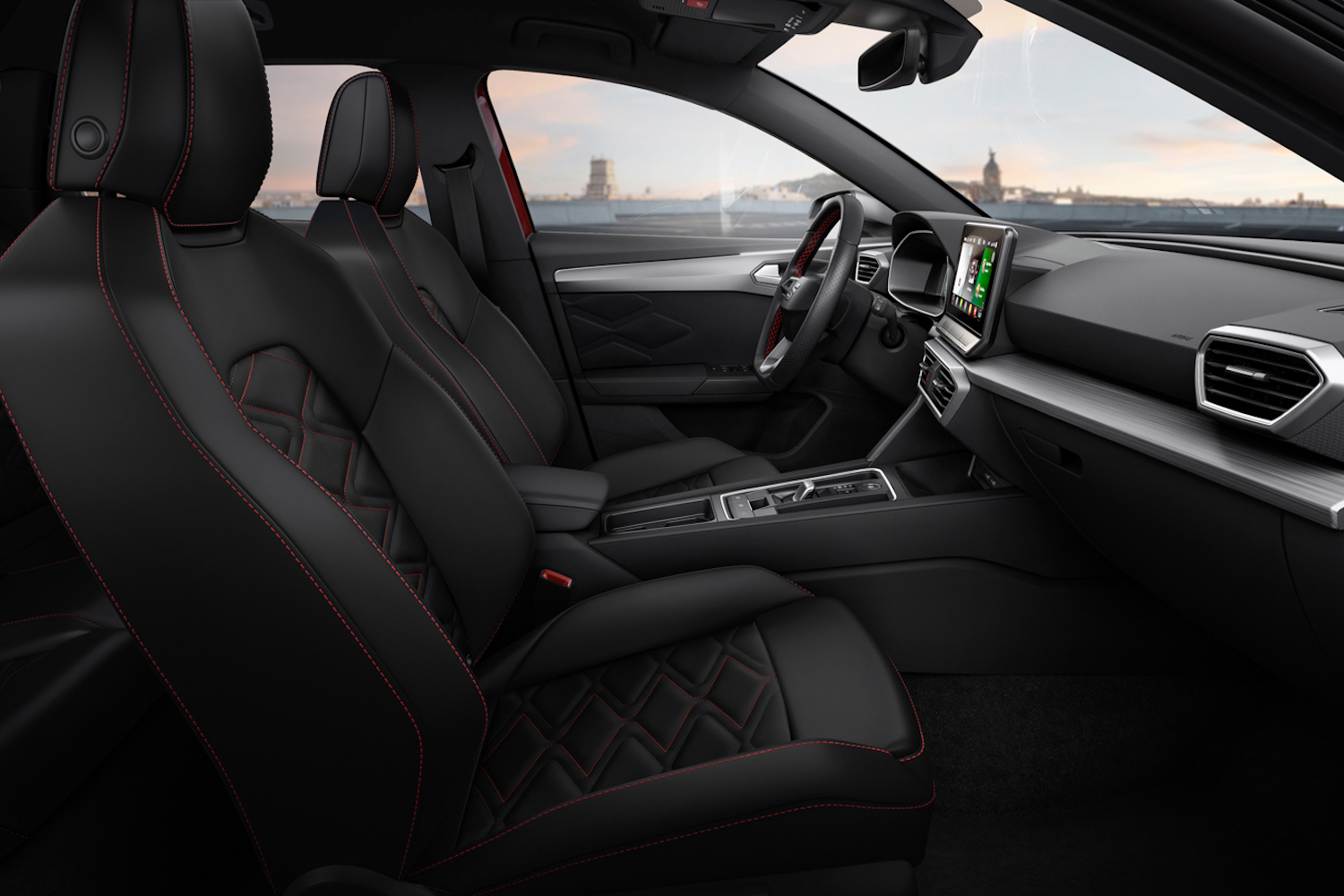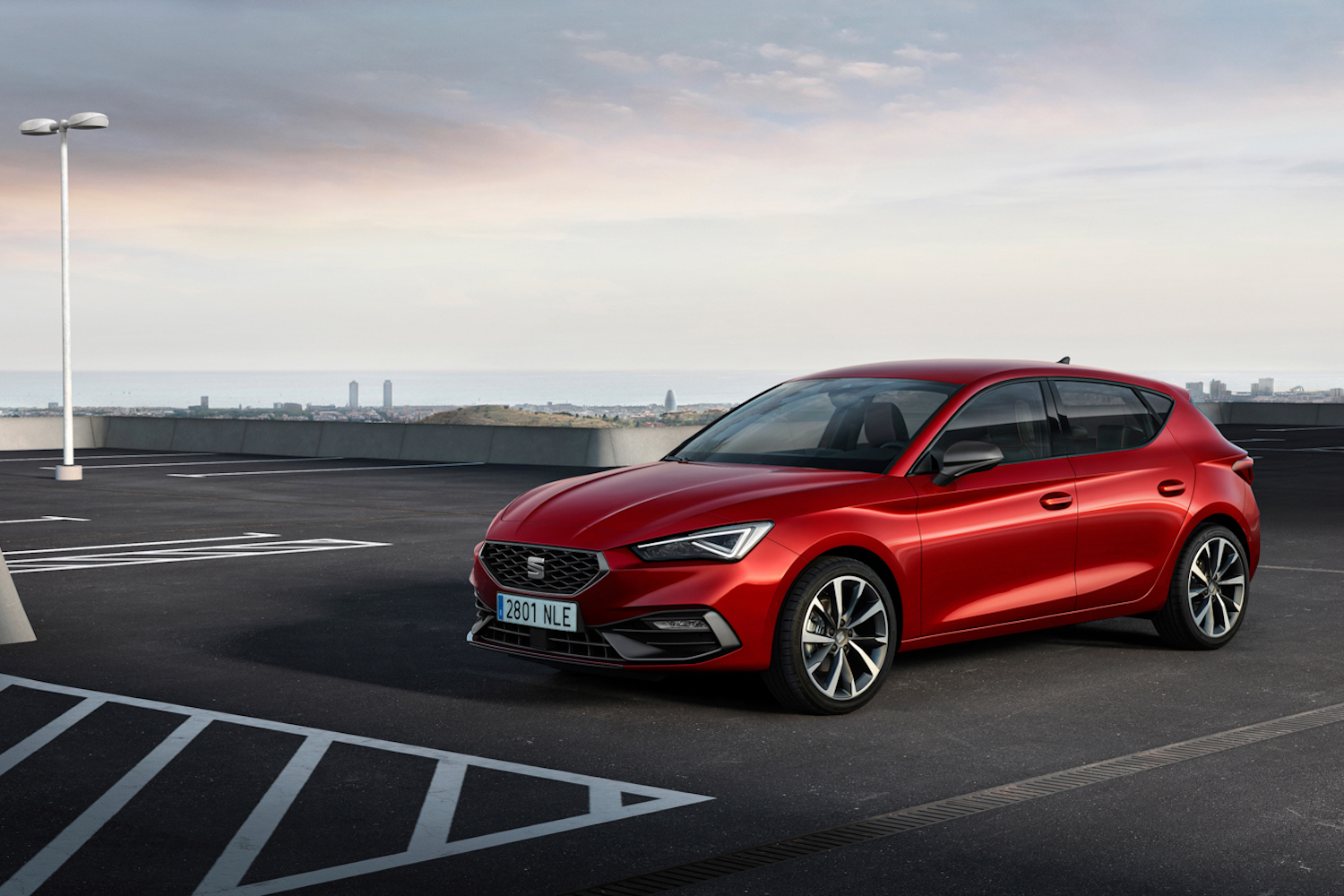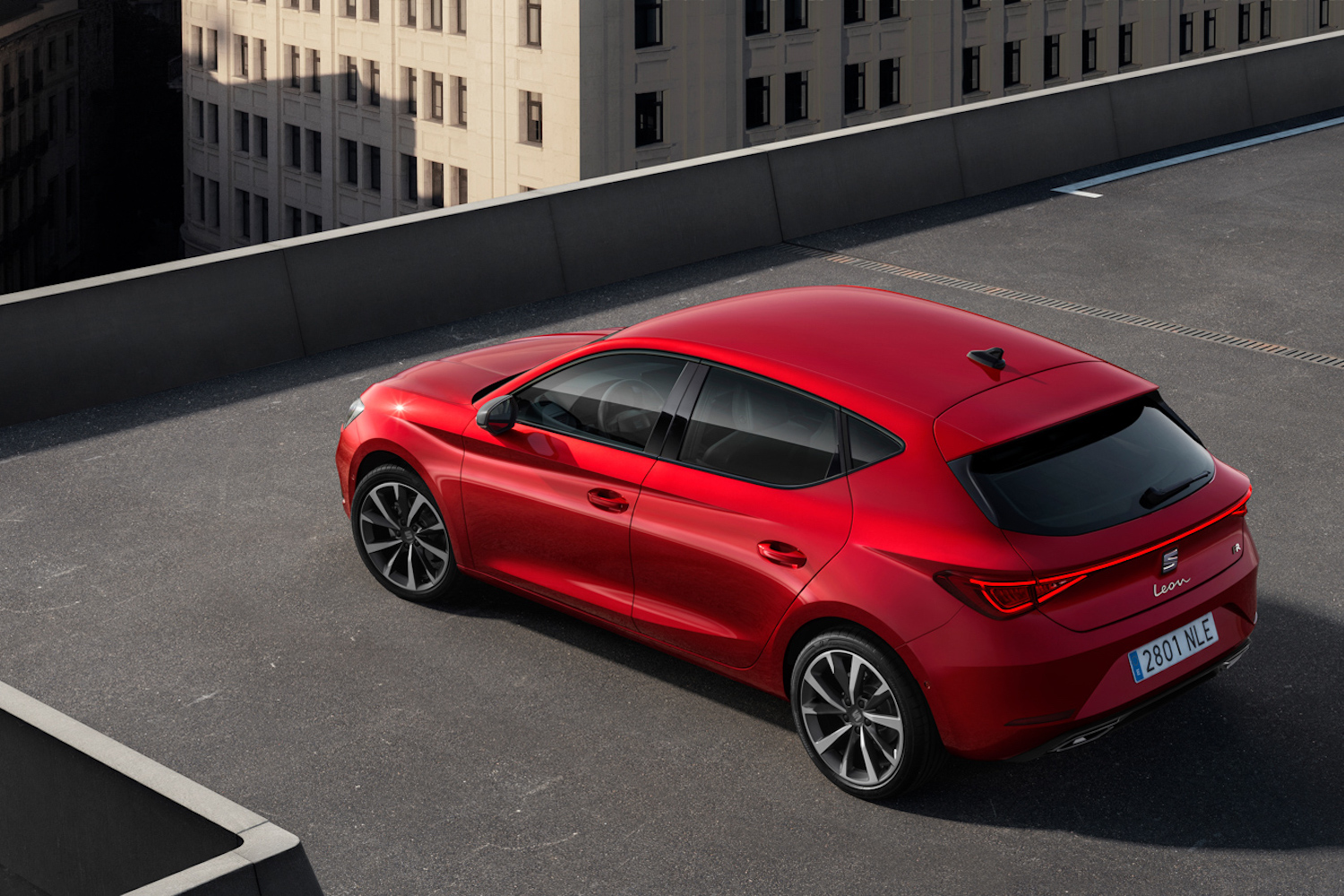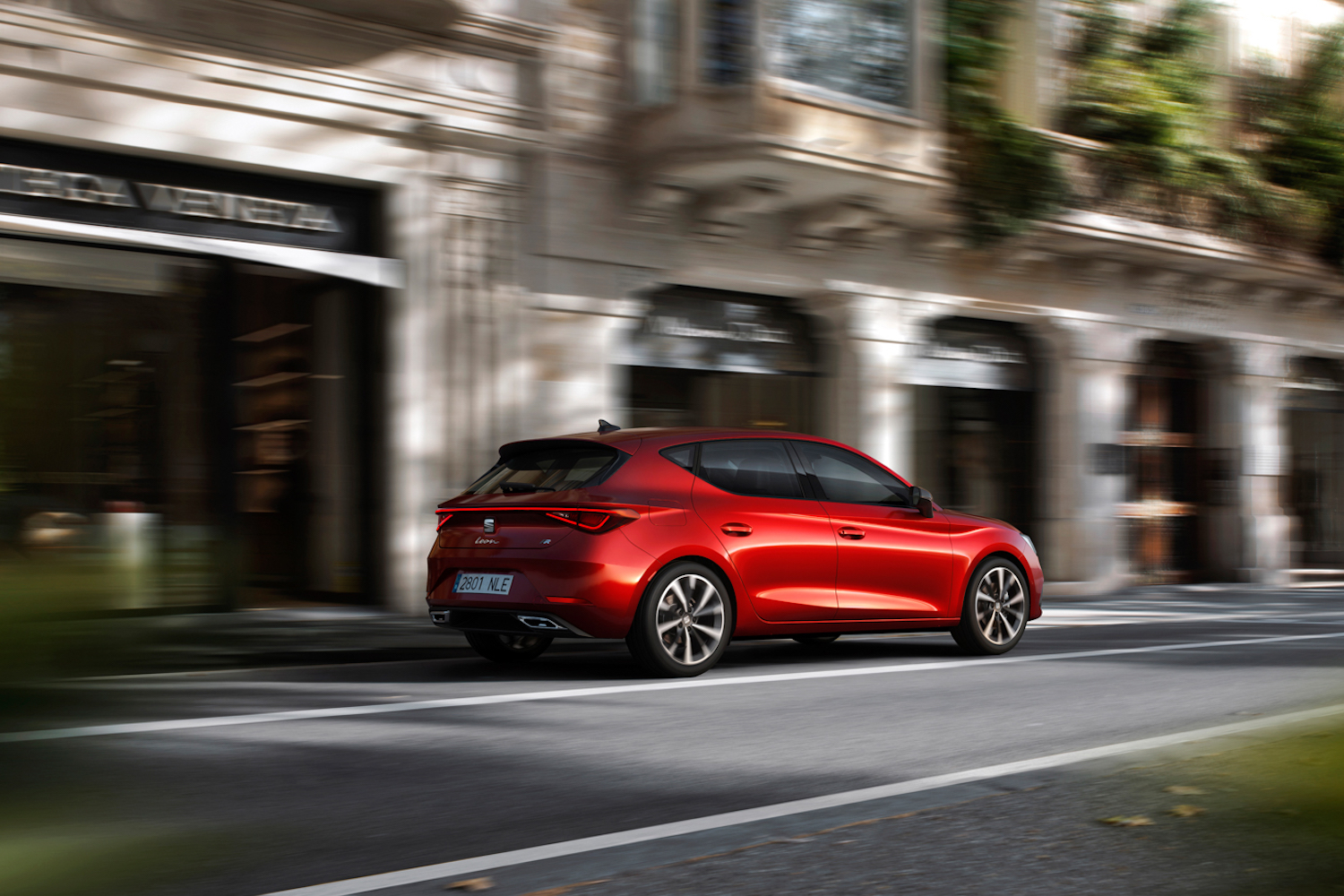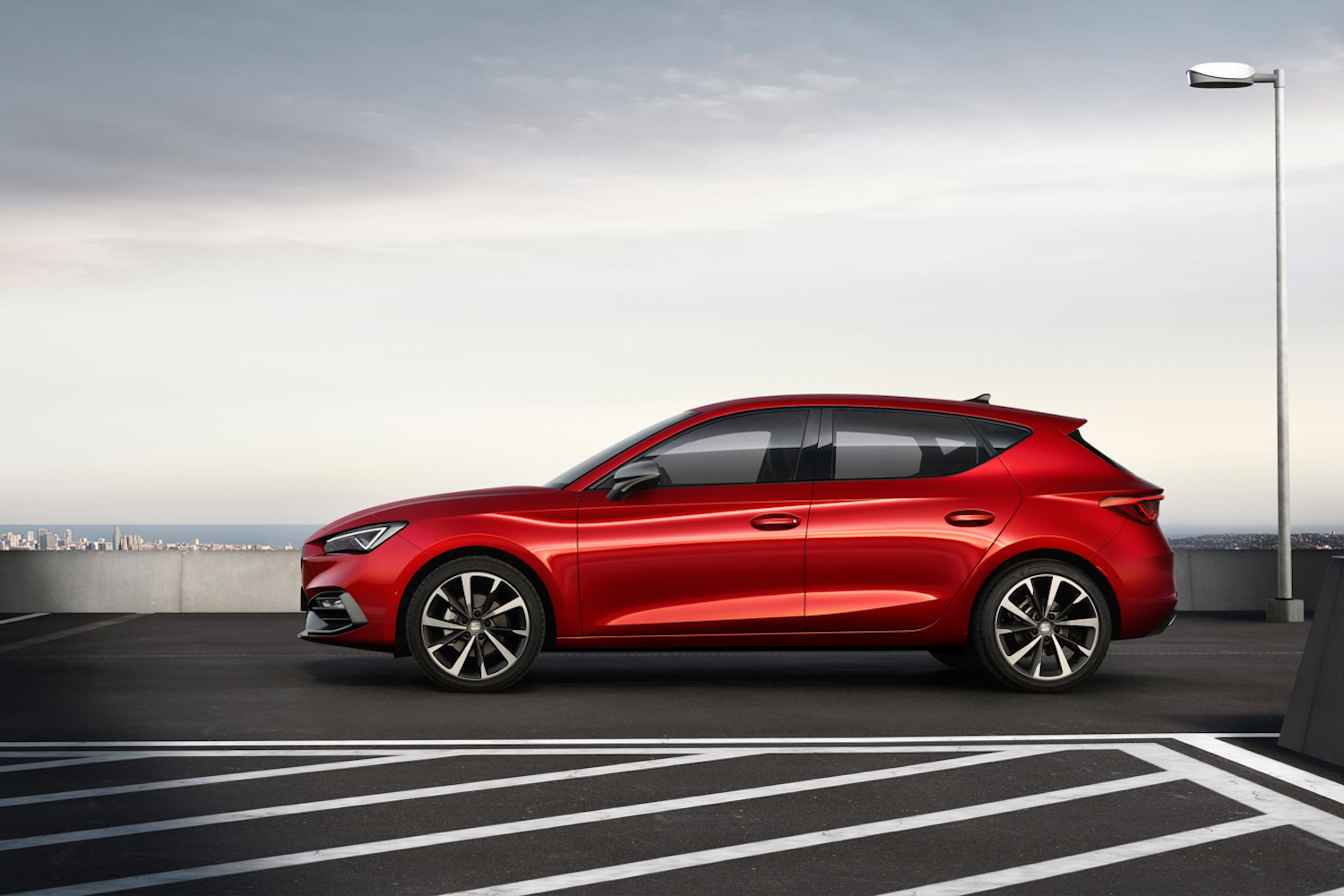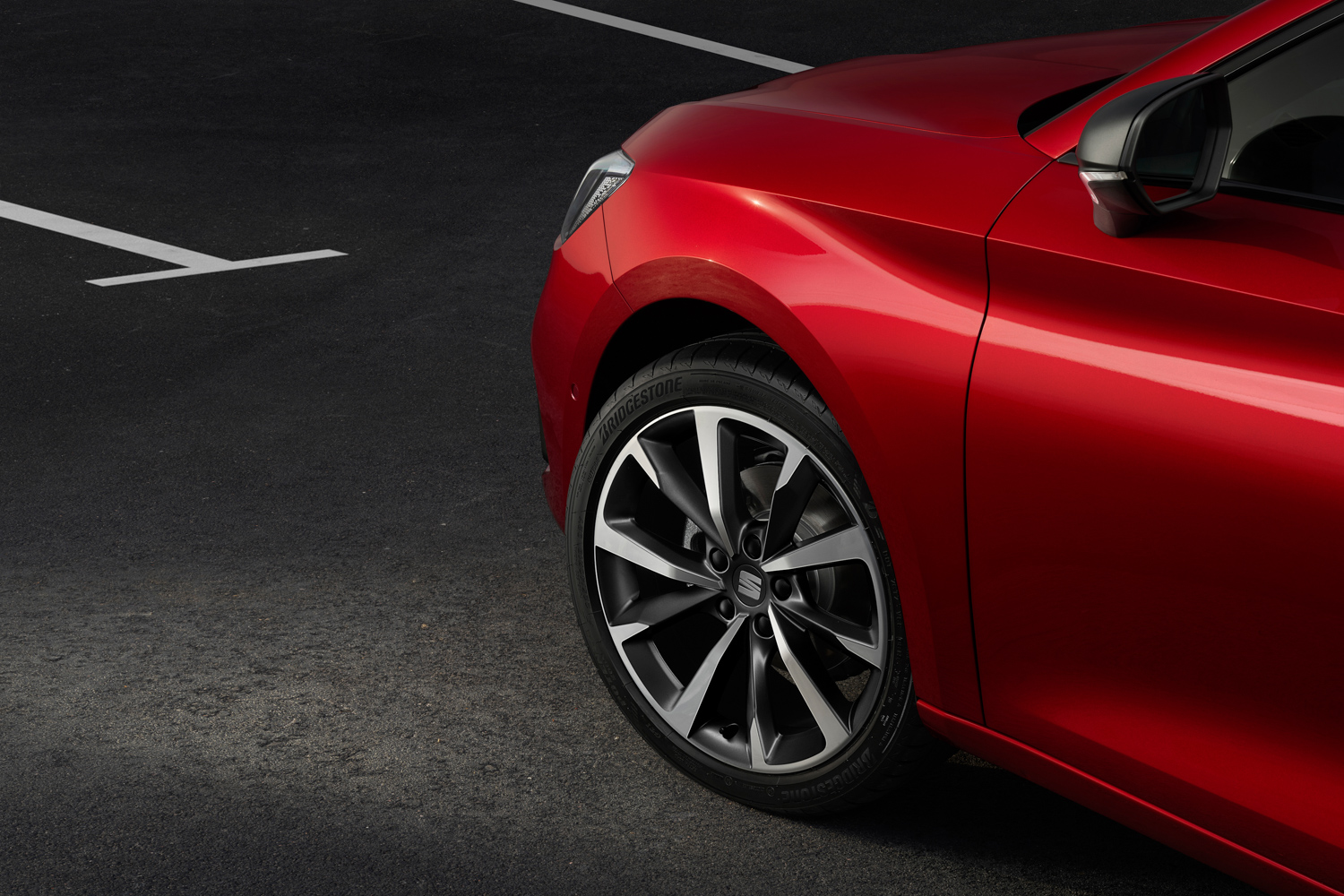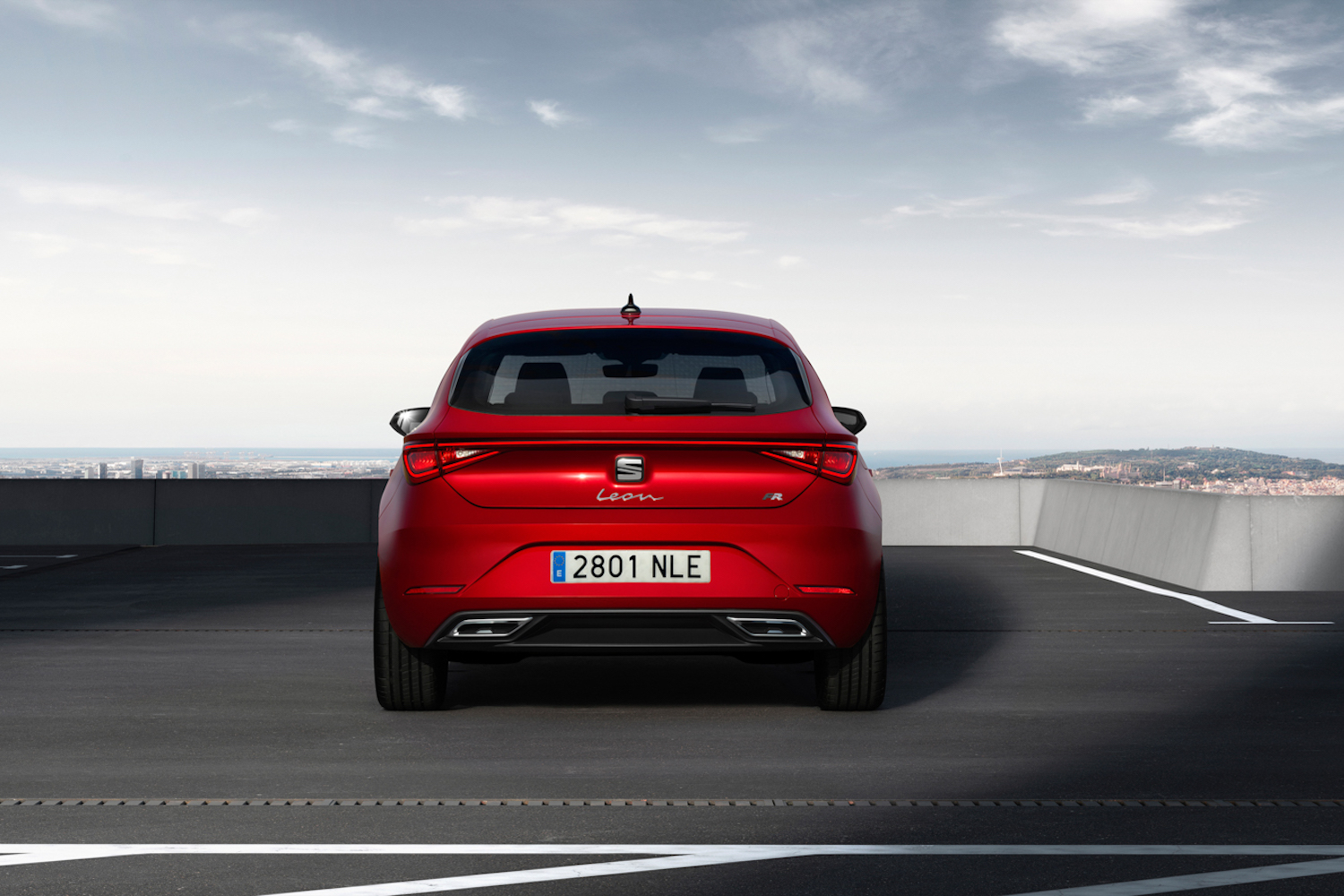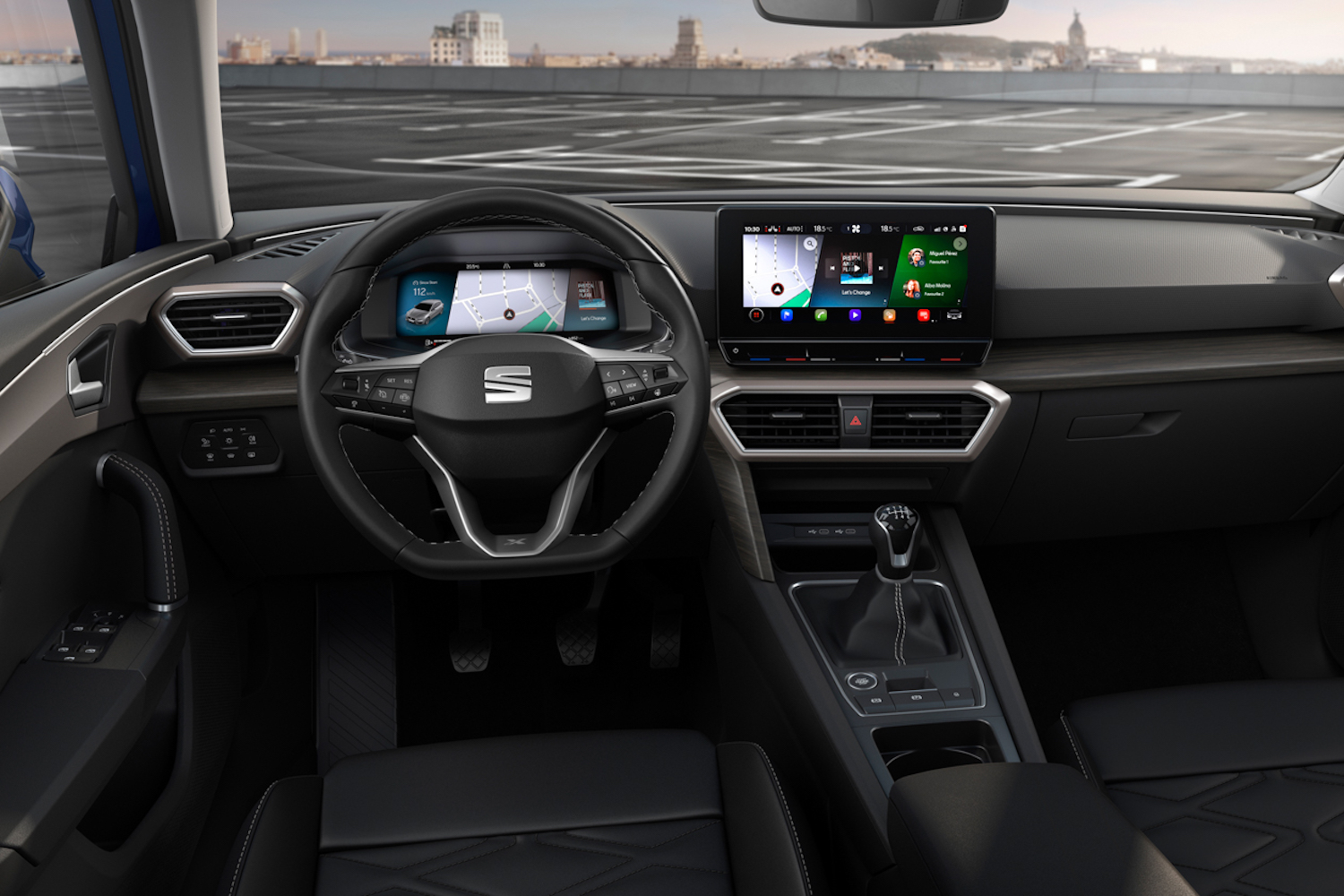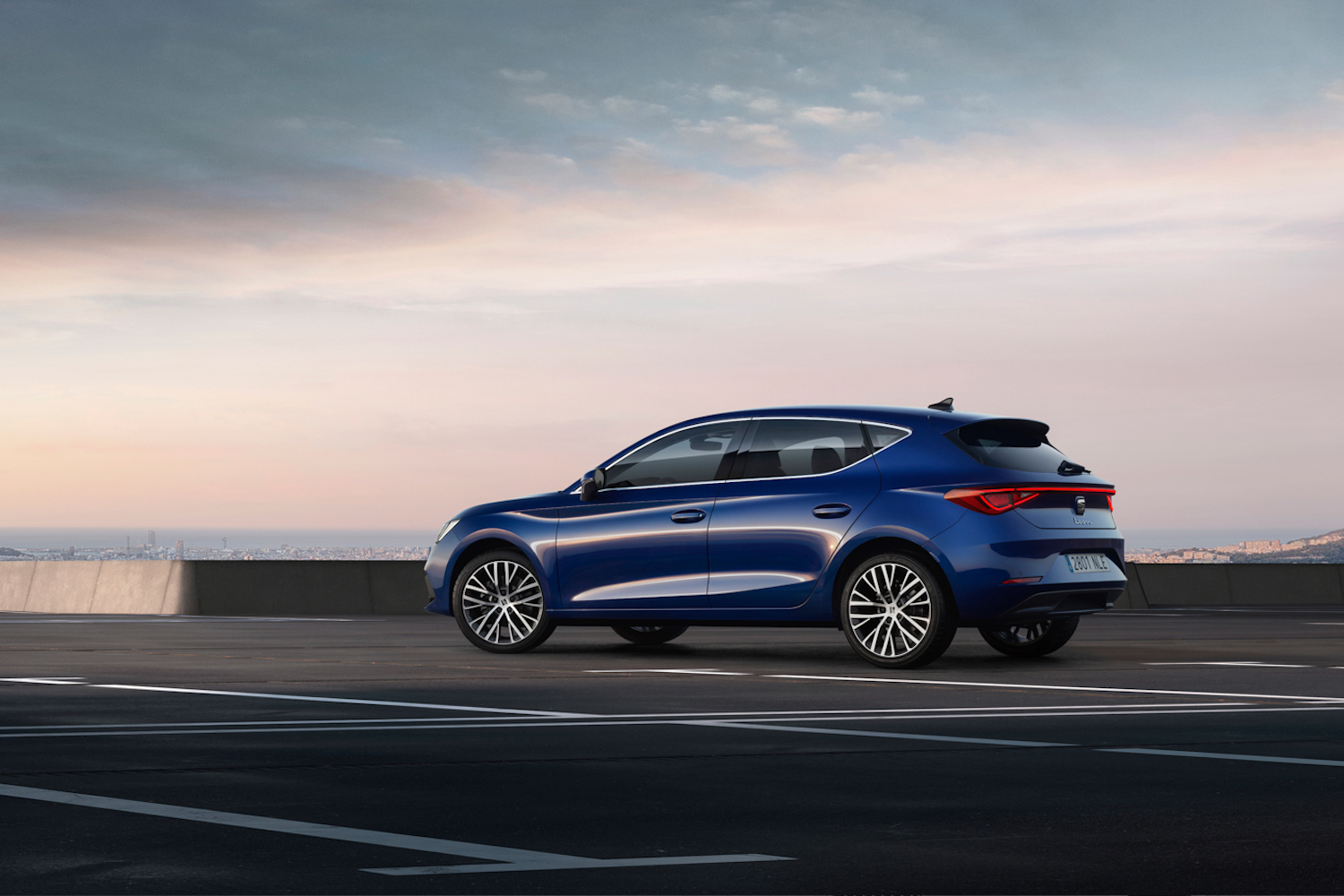Following hot on the heels of the Volkswagen Golf 8 is the new fourth-generation SEAT Leon. It sits on the same 'MQB Evo' platform, and it will be available to buy as a five-door hatchback or as an estate, which SEAT refers to as the Leon Sportstourer. According to the Spanish company, this Leon is the most innovative model it has made to date, and it will be available with a host of connected features thanks to a built-in sim card that can keep it linked to The Cloud.
The exterior styling of the SEAT Leon is something of a departure from its still-handsome predecessor, and it's a look that is more closely aligned with its other most recent model, the Tarraco. Higher-spec models will be available to order with LED headlights that SEAT claims offer almost twice the lumen power of conventional LEDs. These will incorporate dynamic indicators and even puddle lights from each of the side mirrors that project the word 'Hola!' onto the ground when you unlock the car.
The Leon features a blend of stylish curves and smoother lines all mixed into a modern look, but it is distinctly different in appearance from the car it replaces. Like the Tarraco, the rear of the Leon features a light bar that extends across the back, connecting the two light clusters and adding a sense of width to the car despite it being 16mm narrower now. SEAT has reduced the overall height by 3mm, too, although the Leon has grown in length by 86mm with a 50mm stretch between the wheels benefitting passenger space. Despite more passenger space there isn't any more boot space in the hatch, which remains the same as before at 380 litres, although the Sportstourer gets a modest 30-litre bump to 617 litres.
Major improvements inside the cabin
If there was one weak point in the SEAT Leon up to now, it was the quality of the cabin, and SEAT has listened to feedback. Along with better materials inside, it is available with a 10.25-inch digital instrument display and either an 8.0-inch or 10.0-inch colour touchscreen infotainment system. Smartphone connectivity via Bluetooth, USB or wirelessly will be available, and the centre console can be equipped with a Qi-enabled wireless charging pad.
Wrap-around LED ambient lighting adds to the modern look of the interior, especially at night. For models with the DSG automatic transmission, there is even more room available thanks to it switching to a shift-by-wire system that allows for a much smaller drive selector.
Thanks to a built-in eSim, the Leon can connect to The Cloud and related services to provide owners with the latest information for things such as parking availability, real-time traffic updates and access to a growing number of apps that SEAT is working on with developers. Owners will have the ability to remotely access the car via a smartphone app to check where it is parked and whether it's locked, as well as receiving charging information in the case of the eHybrid model. It will also be possible to start the climate control to pre-heat the car while it's plugged in.
A better choice of engines including hybrid versions
Buyers will be able to choose from several different powertrain options with both automatic and manual gearboxes. The petrol engine range kicks off with a turbocharged 1.0-litre three-cylinder unit that produces 110hp - it is the first time an engine of this size has been made available in the Leon. There will be a 1.5-litre petrol engine with an output of 150hp, too, while a 2.0-litre engine tops off the petrol line-up with a 190hp output. In time, a Cupra Leon will join the range with greater performance, likely to exceed 300hp.
Both the 1.0-litre and 1.5-litre petrol engines will be available with a 48-volt mild-hybrid system (badged as eTSI) and paired with the automatic transmission. This will enable limited engine-off running in certain driving conditions in a bid to reduce fuel consumption and emissions. For the first time, SEAT will be offering a plug-in hybrid version of the Leon. It uses a 1.4-litre turbocharged petrol engine equipped with an electric motor fed by a 13kWh lithium-ion battery, resulting in an output of 204hp. The Leon eHybrid will be capable of covering up to 60 kilometres on a single charge before the petrol engine kicks in, and should have the lowest CO2 emissions of the range. That could be appealing to some company car drivers, though SEAT will continue to offer diesel engines in the form of 2.0-litre TDI units with 115- and 150hp outputs.
SEAT Ireland will offer the new Leon in six different trim levels: SE, SE Plus, Xcellence, Xcellence Plus, FR and FR Plus. Along with different levels of standard equipment, these models will receive subtle styling differences. Niall Phillips, Brand Director at SEAT Ireland, commented, "The Leon is a firm favourite amongst Irish customers, and we are confident that they will love the fourth-generation Leon even more. This model will bring a new level of technology, design and safety to this segment and we are excited to see the all-new Leon on Irish roads from May onwards. The Leon is hugely important to the brand, not only because it represents SEAT's core DNA and values, but it will open up the brand to an even wider audience with the introduction of the mild-hybrid and plug-in hybrid powertrains."

